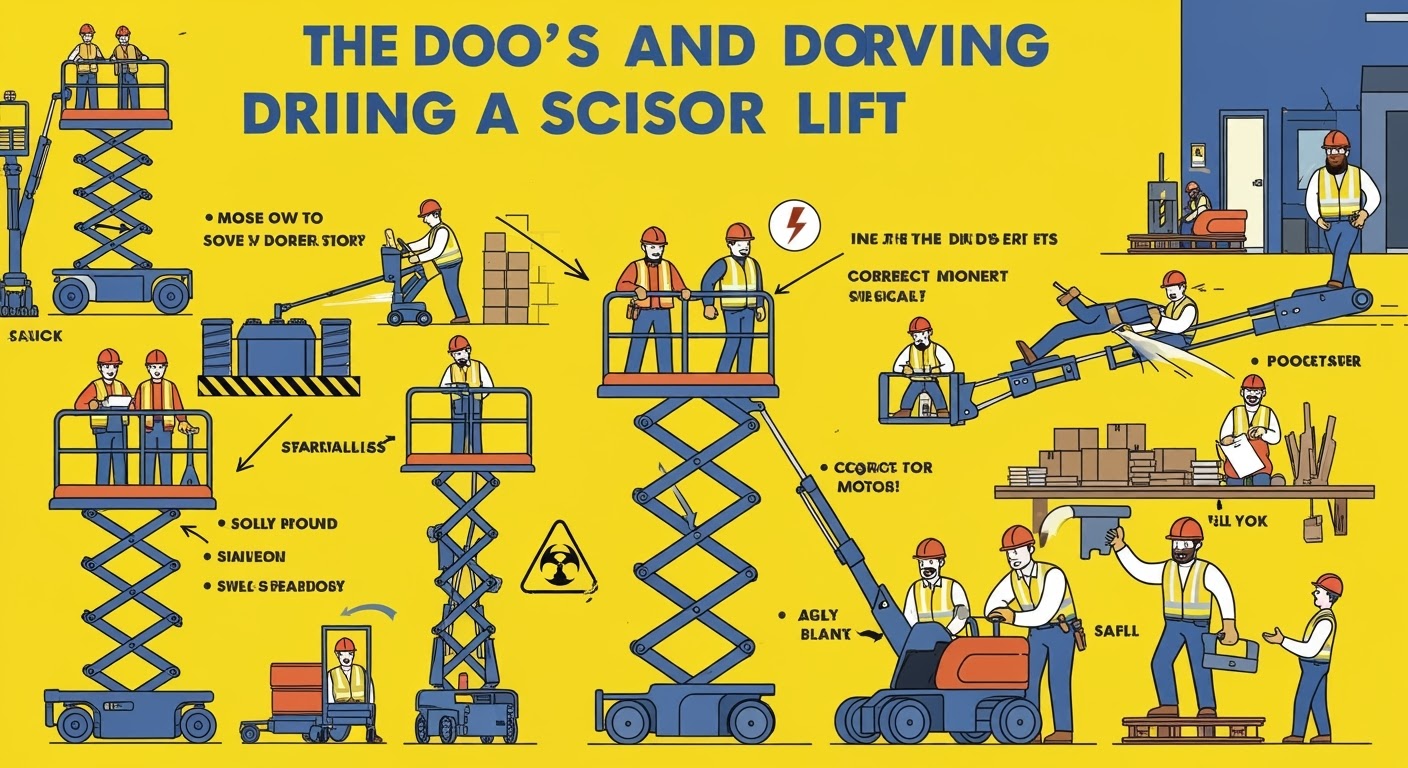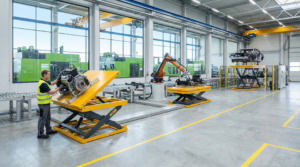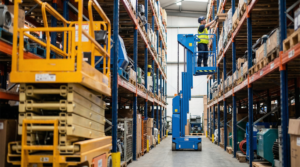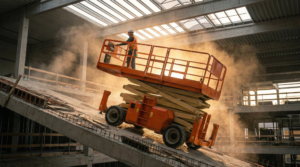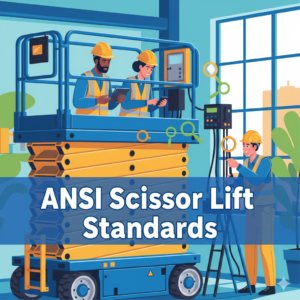The task of driving a scissor lift is a usual but very dangerous job all across industries—from construction sites to warehouse management. The scissor lift safety supervisors, operators, and the company’s owners often wonder if “it is safe to drive a scissor lift while elevated.
A question that somehow arises time and time again is about scissor lift safety. This prominent one that has to be answered by professionals only: is it safe to work with the scissor lift in the extended position?
So, are scissor lifts able to move with the raised platform? Rather than a yes or no question, the answer is more controversial. You should have in mind the type of scissor lift, the manufacturer’s strict guidelines, and the environmental conditions.
Understanding Scissor Lifts and Their Driving Capabilities
A scissor lift can be generally defined as a Mobile Elevated Work Platform (MEWP), which is specifically designed to lift personnel and equipment to higher work areas.
Characteristics of Scissor Lifts:
- Electric scissor lifts (for indoor use)
- Rough terrain scissor lifts (for outdoor use)
- Hydraulic or diesel powered models (for heavy-duty lifting)
Can A Scissor Lift Be Driven When Lifted or Elevated?
While you can move many scissor lifts when they are raised, there are some that were not designed to be used in this manner. The crucial point is to find out from the scissor lift manufacturer whether the scissor lift can be driven while elevated.
- The instructions from the manufacturer
- The height of the lift and the area where lift is being used
- Checking the terrain conditions to understand the situation
- Understanding the load capacity and distribution of the project
This should not be considered a complete list, since the surrounding maintenance must be taken care of as well.
OSHA & ANSI Guidelines on Driving Elevated Scissor Lifts
The regulation of aerial platform safety standards is largely within the scope of the Occupational Safety and Health Administration (OSHA) and the American National Standards Institute (ANSI). OSHA Highlights (1926.453):
- Only authorized and trained workers may operate the equipment.
- PPE for fall protection is in place all the time.
- Driving while elevated is not directly prohibited but must be in accordance with the manufacturer’s guide.
ANSI A92.20 Requirements:
A clear statement, “platform elevation while traveling” referring to an individual who is given the nod to do so by the manufacturer, is o.k. with restricted
- If it is authorized by the manufacturer.
- The area is flat and without debris.
- The scissor lift is under a certain speed, is being driven, and is within the view dashed line.
Safety Protocols to Follow:
- Employers should make sure they conduct a thorough site inspection before moving the lift.
- Observe the load limit (include personnel + equipment).
- The maximum wind speed should not be surpassed in an aerial platform.
Example Models That Allow Elevated Driving:
| Risk Factor | Impact |
| Uneven Terrain | High tip-over risk |
| High Elevation | Reduced stability |
| Heavy Load | Impacts maneuverability |
| Wind Over 28 mph | Not safe to operate |
Risks of Driving a Scissor Lift While Elevated
Captive to the up direction, the center of gravity gets shifted as the risks of tipping, collision, and injuries are also high. Consequently, any little unevenness or surge may dislodge the machine.
Key Hazards:
- Tip-over accidents on uneven ground
- Crushing incidents under overhead obstacles
- Collision with walls or machinery
- Unintended platform motion
Factors That Worsen the Risk:
- Operating in windy conditions
- Moving at excessive speeds
- Carrying overweight loads
- Poor visibility and low lighting
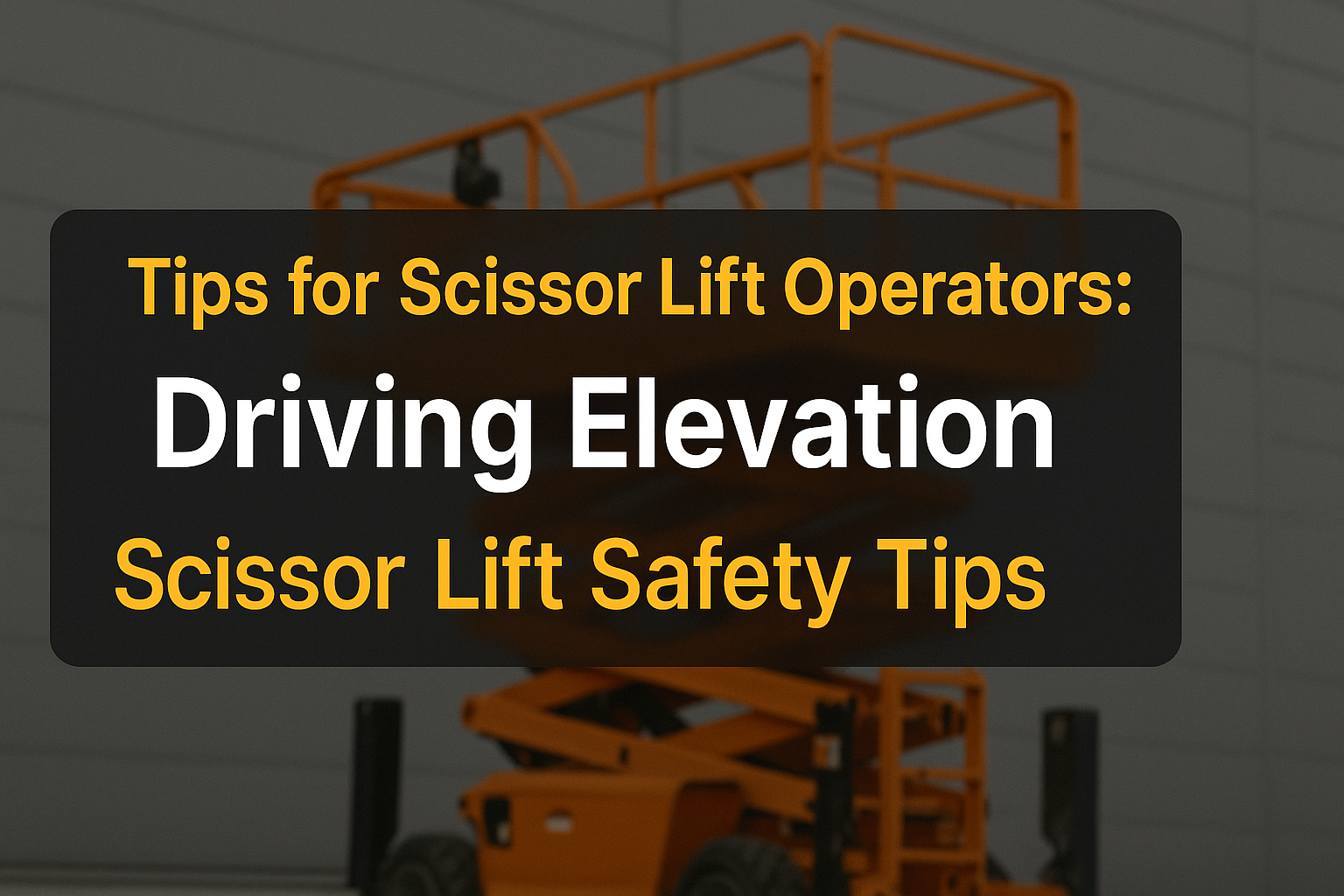
Tips for Scissor Lift Operators: Driving Elevated with Scissor Lift Safety
It is practiced that experienced drivers only move the lift via the manufacturers’ strict safety guidelines; thus, you can’t be too safe when driving a scissor lift. Here are some mandatory safety tips:
Pre-Operational Inspection
- Do a thorough check of all the parts and functionality of the scissor lift.
- White flag battery power compared to the last period without leaks.
- Before the process of raising the lift, ensure that the lift and lower mechanism operation is functioning as expected.
Understand Your Equipment
- Go through the strategy of the machine set out by the manufacturer.
- Any details about the load and maximum height of the lift shall be in your knowledge.
- Learn the behavior of your lift on the transmitter of various functions in the long run.
Monitor Weather and Ground Conditions
- Do not go on if it is raining, snowing, or if the wind is excessive.
- See that the work surface is not only dry but also flat and hard.
- At no time should you drive through inclined
Maintenance & Training: The Backbone of Scissor Lift Safety Operation
One of the primary culprits in the scissor-lift accident scene is either elevating devices that are not maintained to standard or personnel that are inadequately trained. Proper training and regular maintenance are prerequisites.
Maintenance Essentials:
- Check the lubrication system and hydraulics monthly.
- Conduct an inspection of the brake, steering, and motor.
- Discarding damaged safety parts and replacing them with the new ones is necessary.
Training Requirements (Per ANSI A92.24):
Conducting formal education (theory + test) Practice evaluation in actual conditions under direct supervision, knowing the function of all the controls as well as the safety aids
- The theoretical aspect of the study and its end (test)
- Physical work experience coupled with observation of the legal nature of the activities by the employee
- Knowledge of all components and safety instruments
Refresher Training Needed If:
- The operator was involved in an accident.
- New equipment or site conditions are in the picture.
- We observe the operator handling the machine or performing the task in an unsafe manner.
The Impact of Not Taking Care of the Guidelines
Performing a scissor lift operation while elevated without observing the guidelines can bring about
Financial and Legal Impacts:
- OSHA inspection fines
- Claims compensation because of injuries or fatalities
- Higher prices of the insurance policy
Operational Disruptions:
- Immobility of broken equipment leading to downtime
- Human injuries, which can not only cause a labor force shortage
- Loss of property or site assets
FAQs About Driving a Scissor Lift Elevated – Scissor Lift Safety
Can I drive a scissor lift while it’s raised?
Yes, you can drive a scissor lift while it is raised only if the manufacturer confirms it is safe and the weather conditions are suitable (not windy, on a level floor, and without barriers).
What height is safe for driving a scissor lift?
Every model comes with a maximum motion execution height that is usually from 15 to 26 ft. It is highly recommended to look up tables in a user manual.
Can I move a scissor lift while someone is on the platform?
Only if the lift permits raised operating and the person is wearing fall protection equipment and is unaware of potential hazards. Additionally, a slow forward movement shall be used each time.
What happens if I drive a lift elevated on uneven ground?
It may flop, resulting in adverse effects. You should be sure that the ground is level and solid to drive the scissor lift elevated.
What training do I need to operate a scissor lift?
Operators must complete an MEWP certification that adheres to the guidelines set by the American National Standards Institute (ANSI).
Is it allowed if a raised lift is driven on a slope?
No, it is not. According to ANSI and the manufacturer, driving up the slope is not allowed if the lift is in an elevated position.
Do electric scissor lifts have the same rules as rough terrain lifts?
No, it is not. The electric lifts are suitable for indoor work and are considered less stable at height. Nevertheless, the terrain lifts are sturdier and at the same time may seem very limited in terms of elevation.
Final Verdict: Should You Operate a Scissor Lift in an Elevated Position? Are there any scissor lift safety precautions to consider? The action of driving an elevated scissor lift is not intrinsically dangerous, yet it can only be done if all safety, equipment, and environment protocols are observed strictly. The safest practice is to lower the platform when in transit, unless the unit is specially designed for aerial movements.
Remember:
- Refer to the manufacturer’s manual
- Comply with the ANSI & OSHA regulations
- Train all the workers
- Have the machine checked up regularly
Do not use the machine in motion at a higher level on the hills or in the place with too much clutter. It’s the case of better to be safe than sorry, follow scissor lift safety precautions for safe work. i.e., if you are not sure, you should lower the platform first instead of the most common denial behavior of not taking such a step. If you’re interested in scissor lift reviews, comparison charts, training guides, and OSHA-compliant checklists, make sure to explore more on Scissorlifts.org.

